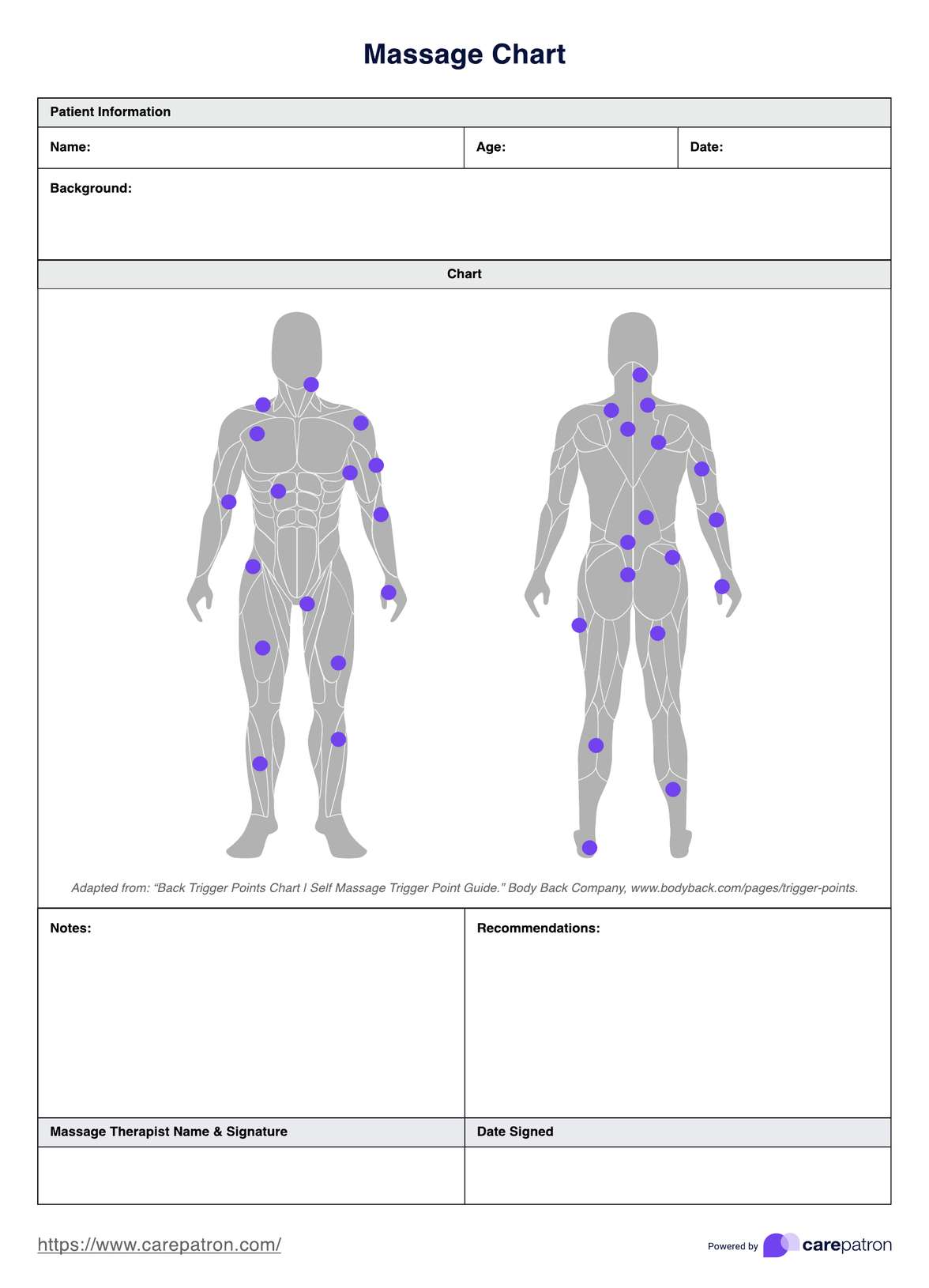The five basic massage movements are effleurage, petrissage, friction, tapotement, and vibration. Effleurage involves long, gliding strokes to warm up the muscles. Petrissage consists of kneading and squeezing movements to release tension. Friction involves deep, circular movements to break up adhesions. Tapotement uses rhythmic tapping or percussive movements to stimulate circulation. Vibration involves shaking or vibrating movements to relax muscles and promote relaxation.

Massage Chart
Explore our comprehensive Massage Chart for holistic healthcare solutions and techniques. Perfect for practitioners and enthusiasts alike!
Massage Chart Template
Commonly asked questions
The order of a full-body massage typically begins with the client lying face down on the massage table. The therapist may start with effleurage to warm up the muscles, followed by deeper techniques such as petrissage and friction to address areas of tension. The therapist then may focus on specific muscle groups, such as the back, shoulders, arms, legs, and feet, using a combination of techniques tailored to the client's needs. The session usually ends with relaxation and gentle strokes to promote overall well-being.
The most popular type of massage varies depending on individual preferences and needs, but Swedish massage is often considered the most widely practiced and recognized form of massage therapy. Swedish massage involves long, flowing strokes to relax muscles, improve circulation, and promote relaxation. It is known for its gentle yet effective approach and can be customized to address specific areas of tension or discomfort. Other popular types of massage include deep tissue, hot stone, and aromatherapy, each offering unique benefits and therapeutic effects.
EHR and practice management software
Get started for free
*No credit card required
Free
$0/usd
Unlimited clients
Telehealth
1GB of storage
Client portal text
Automated billing and online payments











